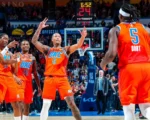Schalk Burger, renowned Springbok legend, has shared his insights on the evolving landscape of rugby competitions, emphasizing the stark contrast between the United Rugby Championship (URC) and the traditional Super Rugby tournaments. Although the URC is considered less intense, Burger highlights its unexpected benefits for South African rugby, particularly in player development and maintaining competitive squads amidst global talent shifts.
Schalk Burger on the URC’s Impact: Balancing Competition and Development in South African Rugby
The transition of South African franchises from the southern hemisphere’s Super Rugby to the northern hemisphere’s United Rugby Championship marked a significant shift in the rugby world. Schalk Burger reflects on this evolution, noting that the URC offers a less grueling, more manageable level of competition compared to the former Super Rugby, which was characterized by its relentless intensity.
According to Burger, the URC’s diverse team geo-distribution includes formidable Irish squads such as Munster and Leinster, plus competitive Scottish teams like Glasgow and Edinburgh, as well as Italian and Welsh sides. However, some Welsh and Italian teams struggle to match South African teams’ strengths on home ground, which influences the competition’s overall intensity.
- URC provides fewer ‘make-or-break’ high-intensity matches each week.
- Welsh and Italian sides sometimes lack the strength to pose serious challenges.
- Irish and Scottish teams remain competitive, providing quality opposition.
This gentler framework allows South African teams—Bulls, Lions, Sharks, and Stormers—to showcase their robust squads without the weekly physical toll that Super Rugby demanded. The Stormers, for example, have consistently secured bonus-point victories against certain weaker opponents.
From Brutal Battles to Strategic Growth: Super Rugby’s Legacy vs. the URC Advantage
Reflecting on his experiences, Schalk Burger recalls the “brutal” nature of the Super Rugby competitions, especially during the eras of Super 12 and Super 14. He considers it the pinnacle of provincial rugby, demanding South Africa’s best talents to remain home-based and endure punishing matches against New Zealand and Australian powerhouses.
Despite the fierce competitiveness and prestige of Super Rugby, the financial allure of European and Japanese clubs has drained some top players from South Africa. This exodus necessitates constant squad renewal back home, and Burger argues the URC’s less intense environment is better suited for developing emerging talent while remaining competitive internationally.
- Super Rugby demanded peak physical and tactical performance weekly.
- Financial incentives abroad led to talent migration out of South Africa.
- The URC allows franchises to nurture players without overwhelming pressure.
- Franchises maintain competitiveness with continual player development.
How URC Shapes South African Rugby’s Competitive Edge and Player Welfare
Beyond competition levels, Schalk Burger touches upon the physical demands and mental toll in rugby today. In the URC, not every match is a critical, high-stakes encounter, which helps manage player workload and improves longevity. This approach contrasts with the relentless schedule of Super Rugby that often pushed players to their limits.
- URC’s varied intensity reduces player burnout and injuries.
- South African teams use the platform to integrate sports nutrition, training equipment, and athletic gear technology, enhancing player recovery and performance.
- The softer competition provides an environment for South African franchises to solidify team identity while refining strategic gameplay.
- It encourages innovation in sportswear and performance wear to optimize athlete capability.
Such strategic benefits have positioned South African clubs prominently in URC finals consistently, underscoring the competition’s capacity to foster both player wellbeing and team success.
South Africa’s Rugby Future: Leveraging URC to Build Resilient Teams and Brand Identity
While the URC might lack the “brutal” charm of Super Rugby, its structure encourages a longer-term vision that includes comprehensive player development, enhanced team cohesion, and more focused use of sportswear and equipment advancements. The result is teams prepared not only to compete but to thrive amid global rugby’s evolving landscape.
- Creates a platform for steady athlete progression with state-of-the-art training equipment.
- Enhances brand identity for South African franchises through sportswear partnerships and performance wear.
- Supports the integration of sports nutrition in daily training, crucial for modern athletic demands.
- Boosts skills development without compromising physical health, ensuring longevity.
For more detailed insights on rugby developments, please explore the latest analyses such as the Queensland Rugby Challenger Series and updates on law innovations in rugby. Understand how these changes ripple through competitions and impact player strategies globally.





